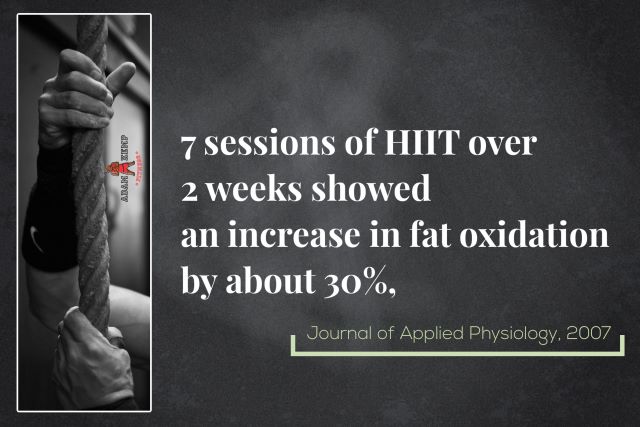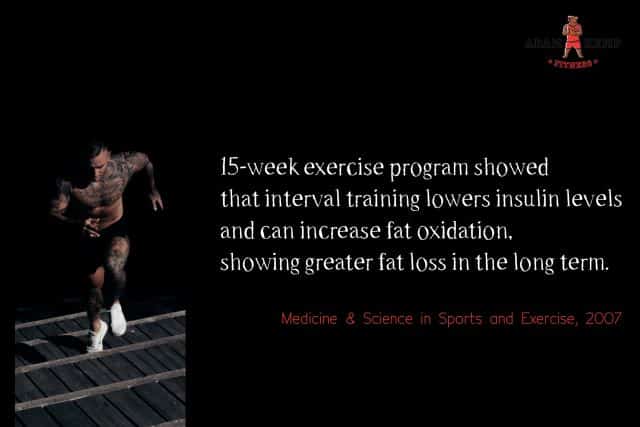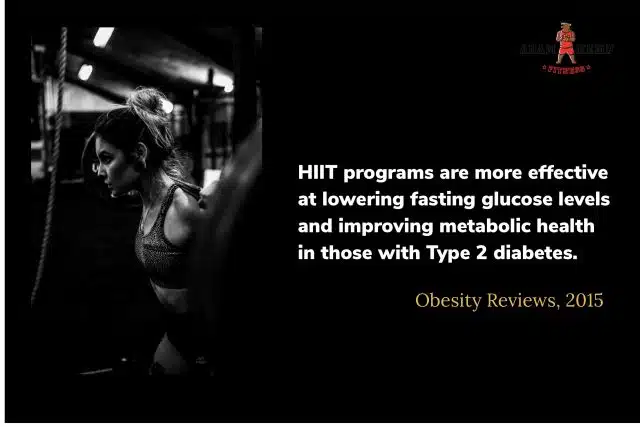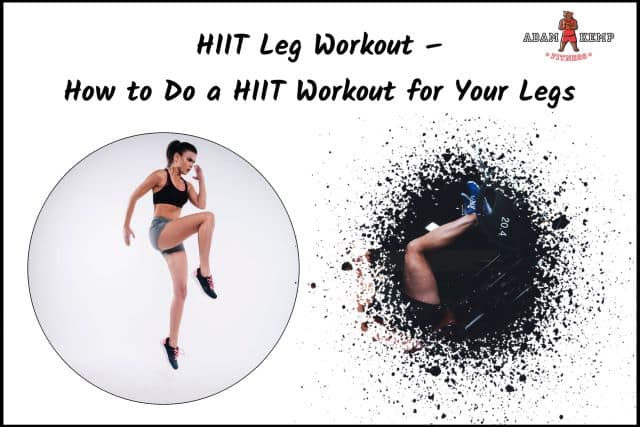The Best HIIT Leg Workouts for Strong, Lean, Athletic Legs
Looking for a great HIIT leg workout to build muscle, burn calories, and help you get fit? You’ve found the right article! I have good news and bad news for you.
Good news: If you hate spending hours doing cardio, then you will love the HIIT leg workouts I am about to tell you about.
Bad news: You’re going to be tired and maybe a little sore.
There are a lot of great workout programs, but HIIT leg workouts like the ones listed below have some incredible benefits. Benefits of HIIT leg workouts include:
- Significant Calorie Burning
- Improved Metabolic Health
- Improved Muscular Endurance
- Improved Cardiovascular Health
- Improved Physical Conditioning
- Improved Body Composition
Even better, HIIT leg workouts can take only 20 – 30 minutes per session.
I’ll explain more below, but my favorite HIIT leg workout is Tabata workouts, which use lower body exercises such as stationary biking, ERG rowing, lunges, step-ups, burpees, and similar exercises.
The Tabata Interval method includes 8 rounds of 20 seconds of maximum effort exertion followed by 10 seconds of rest. By combining various leg exercises for several consecutive “sets” of Tabata intervals, you will get an awesome legs HIIT workout!
Keep reading below to learn more about the benefits of HIIT leg workouts and my favorite HIIT workouts for legs!
What is High-Intensity Interval Training (HIIT)?
High-Intensity Interval Training (HIIT) is a simple but effective form of exercise.
To do a HIIT workout, you will alternate short periods of high-intensity work, followed by more extended periods of low-intensity work or rest. For example, in a 20 – 30-minute workout routine, you may do 15 – 20 minutes of low-intensity work and 10 minutes or less of high-intensity work.
HIIT is a powerful fat-burning workout that you can do in less than 30 minutes and with less than 10 minutes of actual work!
Benefits of HIIT Leg Workouts
Regardless of intensity, exercise puts stress on your body. When facing this stress, your body adapts and grows to make it easier to handle the stress in the future.
Despite being a short workout, high-intensity interval training still puts enormous pressure on your body, resulting in increased calorie burning and fat loss.
For example, a 2007 study published in the Journal of Applied Physiology stated that 7 sessions of HIIT over 2 weeks showed an increase in fat oxidation by about 30%, meaning you burn more fat with high-intensity interval training!

A 2007 study published in Medicine & Science in Sports and Exercise concluded that a 15-week exercise program showed that interval training lowers insulin levels and can increase fat oxidation, showing greater fat loss in the long term.
Furthermore, a 2015 study published in Obesity Reviews stated that HIIT programs are more effective at lowering fasting glucose levels and improving metabolic health in those with Type 2 diabetes.
The point is that HIIT is effective at burning fat, lowering insulin and glucose levels, improving metabolic health, and helping your body adjust to intense workouts.

High-Intensity Interval Training (HIIT) vs. Low or Moderate Intensity Workouts
HIIT works well, but does high-intensity interval training work better than low or moderate-intensity workouts? A high-intensity workout puts more significant stress on the body, forcing it to grow and adapt more than during a low-intensity workout. But, as with anything in life, what you put in is what you get out.
Studies show that:
- 3 HIIT sessions per week for 8 weeks has been shown to increase VO2max (this is how well you utilize oxygen, a common measure of cardiovascular health) and increase fat loss [East Tennessee State University (2001)]
- HIIT results in higher energy expenditure over 24 hours, meaning that you will continue to burn calories after your workout [Medicine & Science in Sports & Exercise (1996). Why? This is a difficult workout, so your body will work harder to recover and will use more energy (calories) even after exercise.
- HIIT is superior over low or moderate intensity training for reversing the risk factors of metabolic syndrome (conditions that increase risk of heart disease, diabetes, and stroke) in a 16-week study of 32 adults with metabolic syndrome [Circulation (2008)]

HIIT workouts are more effective at burning fat, burning calories after a workout, and improving metabolic health than standard low to moderate-intensity cardio.
Here are a few tips you need to know to get the most out of your HIIT leg workouts:
HIIT Leg Workouts RPE (Rate of Perceived Exertion)
Your HIIT leg workouts should be intense because you are only going to exercise for a short amount of time, and the results of the workout depend on your intensity.
You want the high-intensity period to be about 80% or higher of your max heart rate and the low-intensity period to be about 40-50%.
For those who do not use heart rate monitors a lot, the high intensity should feel challenging. It should be difficult to carry on a conversation, and you should feel like you really put work in.
The low-intensity period should feel comfortable. It is a recovery phase and should help bring your heart rate down. But keep moving!
How Long Should a High-Intensity Leg Workout Last?
There are various options for HIIT leg workout duration. As I mentioned before, for the Tabata Interval workout program, you will do eight short rounds of 20-seconds, followed by shorter rest periods of 10-seconds.
In other workouts, you could do maybe 30 seconds to 1-minute of high-intensity work, and 1 minute to 2 minutes before recovery. However, a 1:3 or 1:4 ratio is a good starting point while adjusting to this workout program.
Furthermore, you should do about 5 to 12 interval cycles (high intensity + low intensity = 1 time), but this will vary.
The ACSM recommends doing one HIIT routine while starting out, then increasing to two routines per week. Of course, make sure you give yourself time to recover between each, but you can do HIIT leg workouts up to three times per week as you adapt.
Best Leg Exercises for HIIT Leg Workouts
There are a wide variety of leg exercises you can use during your own HIIT leg workouts. A few of the best leg exercises for HIIT workouts include:
- Air Squat
- Jump Squat
- Front Squat
- Conventional Deadlift
- Jumping Jacks
- Jump Roping
- Forward Lunge
- Reverse Lunge
- Step Ups
- ERG Rowing
- Stationary Bicycle
- Burpees
- Glute Bridges
Best HIIT Leg Workouts at Home
Although some of the equipment you need for some HIIT leg workouts can only be found in gyms or fitness centers, there are a lot of HIIT leg workouts you can do at home. Here are a few options for you to look at and use to help make your own HIIT Leg Workouts:
1.) Bodyweight Tabata HIIT Leg Workout
Duration: 20 minutes
Equipment: None
Instructions: Perform each exercise for 20 seconds at maximum intensity, followed by 10 seconds of rest. Complete 8 rounds (4 minutes) of each exercise before moving to the next.
- Air Squats
- Jumping Lunges
- Burpees
- Step-Ups (on a sturdy surface like stairs)
Rest: Take a 1-minute rest between exercises.
2.) Plyometric Power Circuit
Duration: 25-30 minutes
Equipment: None
Instructions: Alternate between 30 seconds of high-intensity work and 90 seconds of low-intensity recovery. Perform the circuit 3 times.
- Jump Squats
- Forward Lunges (alternating legs)
- Side-to-Side Bounds (lateral hops)
- Burpees
- Mountain Climbers
Rest: 2 minutes between circuits.
3.) Stationary Bike Tabata
Duration: 15-20 minutes
Equipment: Stationary Bike
Instructions: Use the Tabata interval method for this workout. Perform 20 seconds of maximum effort pedaling, followed by 10 seconds of slow pedaling. Repeat for 8 rounds per set.
- Complete 2-3 sets, resting 2 minutes between sets.
- Increase resistance slightly each set for added challenge.
4.) Rowing Machine Leg Burner
Duration: 20 minutes
Equipment: ERG Rowing Machine
Instructions: Alternate between 40 seconds of maximum-effort rowing and 1:20 of light rowing or complete rest. Perform this interval for 10 rounds.
- Add 5 minutes of steady rowing as a warm-up and cool-down.
5.) Bodyweight 1:3 HIIT Circuit
Duration: 25 minutes
Equipment: None
Instructions: Perform 30 seconds of intense exercise followed by 90 seconds of recovery. Complete 5-6 rounds of each exercise before moving on.
- Reverse Lunges (add a knee drive for more intensity)
- Jump Squats
- Step-Through Lunges (step forward and then backward with the same leg)
- High Knees
Rest: 2 minutes between exercises.
6.) Hill Sprint HIIT
Duration: 30 minutes
Equipment: A hill or staircase
Instructions: Sprint up the hill or stairs for 20-30 seconds at maximum effort. Walk or jog back down for recovery (1:4 work-to-rest ratio).
- Complete 6-8 sprints.
- Warm up with dynamic stretches and light jogging for 5 minutes.
7.) No-Jump HIIT for Beginners
Duration: 20 minutes
Equipment: None
Instructions: Perform each exercise for 40 seconds at a high intensity, followed by 20 seconds of rest. Complete the circuit 3 times.
- Air Squats
- Step-Back Lunges (alternating legs)
- Wall Sit
- Glute Bridges
Rest: 1 minute between circuits.
Read Next: One Punch Man Workout Routine



